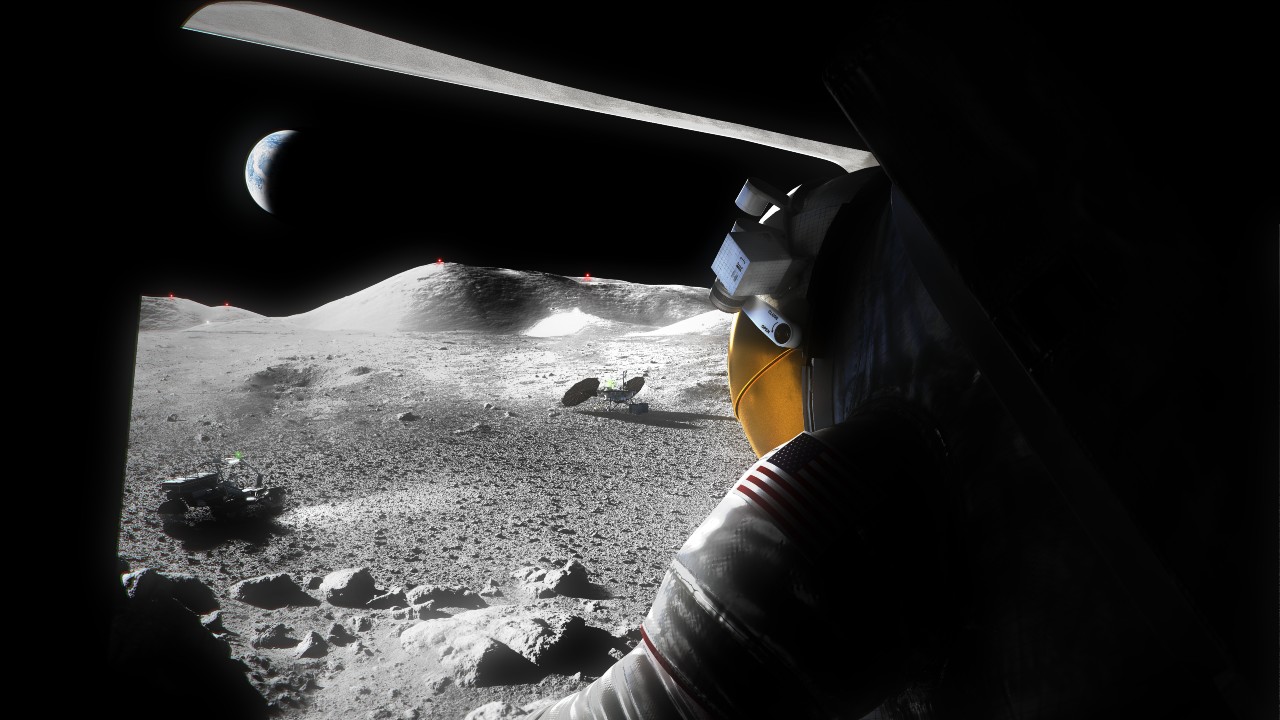As part of its Artemis program, NASA announced plans to fund a second lunar lander alongside SpaceX’s Starship HLS.
Expand Expanding CloseNASA announces second Artemis lander to compete with SpaceX

Email Harry at HarryStoltz@spaceexplored.com and follow on Twitter @HarryStoltz1.

As part of its Artemis program, NASA announced plans to fund a second lunar lander alongside SpaceX’s Starship HLS.
Expand Expanding Close
This morning, SpaceX plans to launch their Transporter 3 mission, carrying a payload of dozens of nanosatellites and microsatellites to space. Here’s how to watch the Falcon 9 rocket lift off from the Kennedy Space Centers’s Space Launch Complex 40.
Expand Expanding Close
SpaceX’s Hawthorne headquarters currently faces large COVID outbreak amidst the cOmicron surge.
Expand Expanding Close
When most people think of NASA, they might picture the International Space Station, the Apollo Program, or even the Hubble Space Telescope. One oft-overlooked field of study is the space agency’s long history of looking back at our own planet. NASA-conducted climate research serves as the backbone of our current understanding of our changing climate. The space agency’s climate research relies heavily on its fleet of weather satellites, which help researchers develop accurate climate models.
Expand Expanding Close
A new report issued by the NASA OIG voices concerns surrounding ISS decommission. The International Space Station is set to retire soon, and the agency itself doesn’t have a successor in the works.
Expand Expanding Close
SpaceX conducted a successful static fire of Crew-3’s Falcon 9 booster this last Thursday making them ready for their first launch date on Halloween. However, due to weather in planned abort zones along the easter coast of the US and a “minor medical issue”, Crew-3 has been delayed to tonight. Read below how to watch SpaceX’s Crew-3 launch.
Expand Expanding Close
Spacecraft continue to advance, and one of the latest new spacecraft to enter operation is SpaceX’s Dragon capsule. As Crew-3 prepares for launch to the station, Crew-2 needs to return home, and Crew-2’s Dragon capsule is nearing the limit for continuous-time in space. But what is that limit, and why is the spacecraft limited?
Expand Expanding Close
New information obtained from the Juno mission has unveiled the atmospheric processes behind Jupiter’s stripes, polar cyclones, and even the Great Red Spot.
Expand Expanding Close
NASA published a challenge for K-12 students to design a robot capable of digging and transporting lunar regolith.
Expand Expanding Close
The Russian cargo ship “Progress 78” relocated to the Nauka module this Friday. There the spacecraft will allow the crew to conduct tests on the brand new module.
Expand Expanding Close
Artemis I is finally within view as SLS nears completion. Wednesday, the Orion capsule was lifted onto the SLS rocket within the Vehicle Assembly Building.
Expand Expanding Close
A new bill proposed by Congress would give NASA more money for its Human Landing System program, but requires another landing contract.
Expand Expanding Close
China’s second crewed mission of the year, Shenzhou-13, has arrived at the Tianhe space station core module.

The Lucy spacecraft will journey to Jupiter’s “Trojan” asteroids to gain insight into the formation of our solar system. Here’s how to watch the mission.
Expand Expanding Close
NASA has released a climate action plan that outlines key sustainability priorities and reiterates the agency’s commitment to climate research.
Expand Expanding Close
Aerojet Rocketdyne will design the main engine for NASA’s Orion spacecraft for Artemis missions 6-14.
Expand Expanding Close
The crew of China’s Shenzhou-12 mission have returned safely back to Earth after their 90-day stay on the Tiangong space station.
Expand Expanding Close
Researchers at NASA’s Ames Research center will announce the landing site of the Artemis program’s first robotic rover, VIPER. The rover will explore the lunar south pole in search of resources for crewed missions.
Expand Expanding Close
The Perseverance Rover has collected two samples so far on the Mars, and NASA says they reveal the presence of both ancient water and salt in Jezero Crater
Expand Expanding Close
The Mars Reconnaissance Orbiter (MRO) sent back nearly 300 new photos of the Red Planet which were released September 1st.
Expand Expanding Close
The Perseverance rover obtained its first rock sample on Mars. NASA plans to return this rock-core, along with future samples back to Earth on future Mars missions.
Expand Expanding Close
Virgin Orbit announced a partnership with the Texas-based nonprofit Southwest Research Institute to work on future research missions.
Expand Expanding Close
With the continued goal of crewed landings on the Moon in 2024, NASA is in need of more flight hardware for lunar exploration. The next big part will be a rover, NASA put out a request for information regarding proposed Artemis rovers.
Expand Expanding Close
Last Tuesday, NASA Administrator Bill Nelson hosted Ukraine’s president Volodymyr Zelensky at NASA’s headquarters in Washington, DC.
Expand Expanding Close